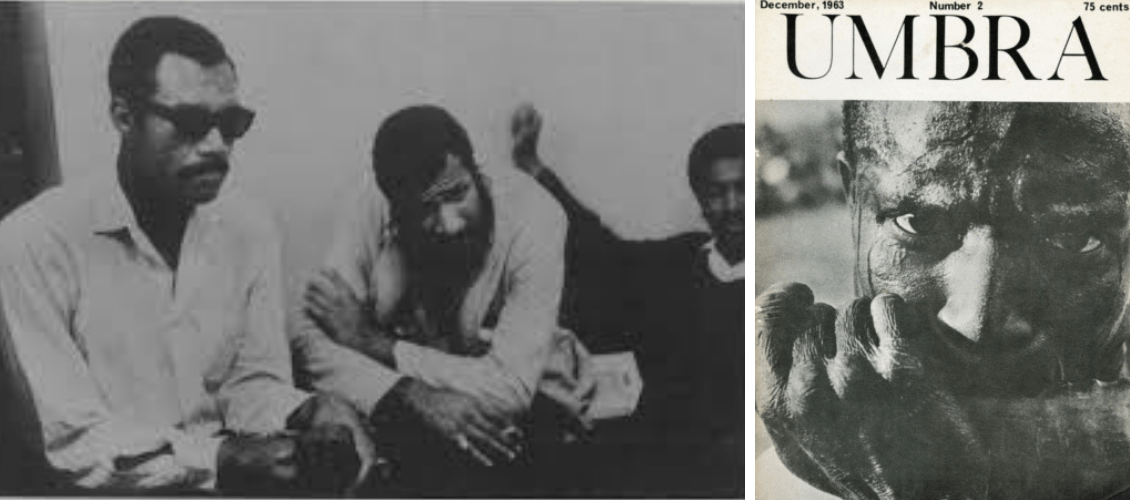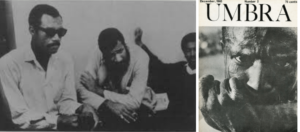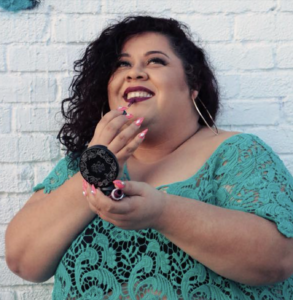The Umbra Poets Workshop ran from 1962-1965. They met for three years at Manhattan’s Lower East Side in New York City. As the first post-civil rights Black literary group (that we have record of), they sought to establish a voice distinct from the prevailing institutions of the 60s. They conducted readings, discussed writing, and engaged in political discourse.
The group ran a little literary magazine titled “UMBRA.” The first issue was published in the Winter of 1963. The first editor was Thomas C. Dent. The two associate editors were Calvin C. Hernton and David Henderson. The Production editor was William E. Day. Rolland Snellings was the circulation manager, and Nora Hicks was the secretary. At the time of publication, affiliated members of the “SOCIETY of UMBRA” were: Mildred Hernton, Albert Hayes, Joseph Johnson, Tom Feelings, Oliver Pitcher, Florence Squires, Brenda Walcott, and Bill Beachum. The number of listed members practically doubled by the second edition of the magazine in December of that year. Editions of the magazine could be bought for “$.75 per copy, $2.50 per year (three issues, mailing costs included).” The copyright was under the group’s name.
According to the group, they had two definite goals: one, to share the experience of being Black in America; and two, to share the human quality of social awareness. Besides this, the ethos of their magazine had a particular bent to it, specifically towards the innovation, politics and race. The forward, which is simply signed by “The Editors,” states that “UMBRA is not another haphazard ‘little literary’ publication.” They believed that “there [were] unpublished and infrequently published ethnic writers whose works are excellent, important and often far su
perior to those adopted few with which the standard press habitually and expediently affronts the public.” Further, UMBRA as a group and as a little magazine wanted to provide a mode of operation for young writers “who present aspects of social and racial reality which may be called ‘uncommercial’, ‘unpalatable,’ [‘] unpopular’, [and] ‘unwanted’.” They wanted writers who were “too hard on society.” They would “not print trash.” But, more so than this, they identified as “a group project,” perhaps positing that this commitment outlined over the course of two pages was an agreed upon vision and mission statement of all members. The contributors of the first edition of UMBRA ranged from the 18 year old Lorenzo Thomas to the 39 year old Oliver Pitcher. The first magazine had 16 contributors for a total of 46 pages of verse.
By the second edition dated at December of 1963, the magazine featured photography and prose along with verse. Writers like Ishmael Reed were contributors, and a translation of Aime Cesaire by Charles Guenther was published. A manifesto or editors note was not included in this edition.
Other scholars studying UMBRA have listed the group being a forerunner to the Black Arts Movement Of course this is evident in Umbra’s desire for a Black art form, one that spoke to the social life and social awareness of Black people. It might be useful, however, to not think of this connection as a linear progression, but rather as a the beginning to a series of interlocking networks of Black poets writers, thinkers, activists, and future magazine editors who were creating and producing work in the post war moment when, already, a proliferation of little magazines and group identities were coming to the fore.
The group dissolved by 1965. Lorenzo Thomas’s papers housed at the Schomburg in New York city hint that the Society of Umbra may have ended due to political disagreements.
Members of this group went on to create and/or participate in the following journals: NKOMBO, BLACK RIVER JOURNAL, CALLALOO, YARDBIRD, Y’BIRD, QUILT, EAR and MAIN ST.
With all of this in mind, it is surprising to have so much archival material for a group that is mentioned anecdotally. That is a commentary for a different time, though.
****
Written by: ABAB/ 20 Oct, 2018







